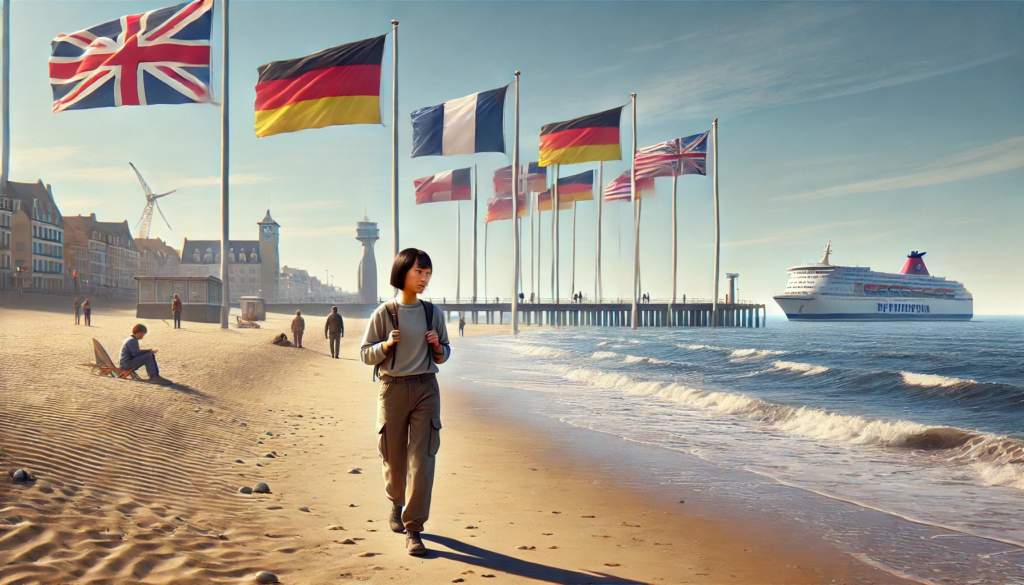ChatGPT:
Ostend (Oostende in Dutch) is a vibrant coastal city in Belgium, located along the North Sea in the province of West Flanders. Known for its beaches, port, and maritime significance, Ostend has a rich history and has developed into a popular seaside resort over centuries.
Origin and Early History
• Medieval Beginnings: Ostend’s origins date back to the 9th century when it was a small fishing village located on an island between the North Sea and inland lakes. The name “Ostend” means “east end,” referring to the eastern end of the island.
• In the 14th century, the village received city rights and began to grow. The main occupation was fishing, and the town gained importance as a small trading port.
Spanish and Austrian Periods (16th–18th centuries)
• During the Eighty Years’ War (1568–1648) between the Spanish Empire and Dutch rebels, Ostend became strategically significant. The Siege of Ostend (1601–1604) was one of the bloodiest battles of the war, lasting over three years. Though the Spanish ultimately captured the city, its resilience symbolized Dutch resistance.
• After the Spanish period, the Austrian Habsburgs ruled Ostend in the 18th century. The city became economically important with the founding of the Ostend Company (1722–1731), which traded with the East Indies, but it was dissolved under pressure from competing colonial powers.
19th Century: Rise as a Seaside Resort
• During the Napoleonic era (early 1800s), Ostend was fortified. After Napoleon’s defeat, Belgium gained independence in 1830, and Ostend began a period of transformation.
• The 19th century saw Ostend develop into a luxurious seaside resort. Under King Leopold II’s patronage, it became known as the “Queen of the Belgian Seaside Resorts.”
• Elegant hotels, promenades, and royal villas were built, attracting the European elite.
• The Ostend Hippodrome and Kursaal (casino and cultural center) added to its charm.
• A railway connection in the mid-19th century further boosted tourism and trade.
20th Century: Wars and Reconstruction
• World War I: Ostend suffered significant damage as a strategic German naval base. The city was bombed heavily, and its economy faltered.
• World War II: Ostend was again occupied by Germany and heavily bombarded, particularly due to its importance as a harbor. The city faced extensive destruction.
• Post-War Reconstruction: After WWII, Ostend was rebuilt with modern architecture. It regained its status as a popular seaside destination.
Modern Development
• Ostend is now Belgium’s largest coastal city, known for its blend of history, modern attractions, and maritime culture. Its highlights include:
• The Beach and Promenade: A key attraction for tourists, especially during summer.
• The Port: An important hub for fishing, freight, and passenger travel (with ferry services).
• Cultural Landmarks:
• Sint-Petrus-en-Pauluskerk: A neo-Gothic church.
• Mercator Ship: A famous 20th-century training ship turned museum.
• Kursaal Oostende: A renowned casino and entertainment venue.
• The city hosts events like Theater Aan Zee, a performing arts festival, and is home to modern art installations like the Crystal Ship urban art festival.
Economic and Cultural Role
• Ostend remains an economic hub due to its port, which supports fishing, cargo, and tourism industries.
• It continues to evolve as a dynamic cultural city while preserving its maritime and royal heritage.
In summary, Ostend has transformed from a medieval fishing village into a prominent European seaside destination, overcoming wars and challenges to become a modern, vibrant city with a rich historical past.
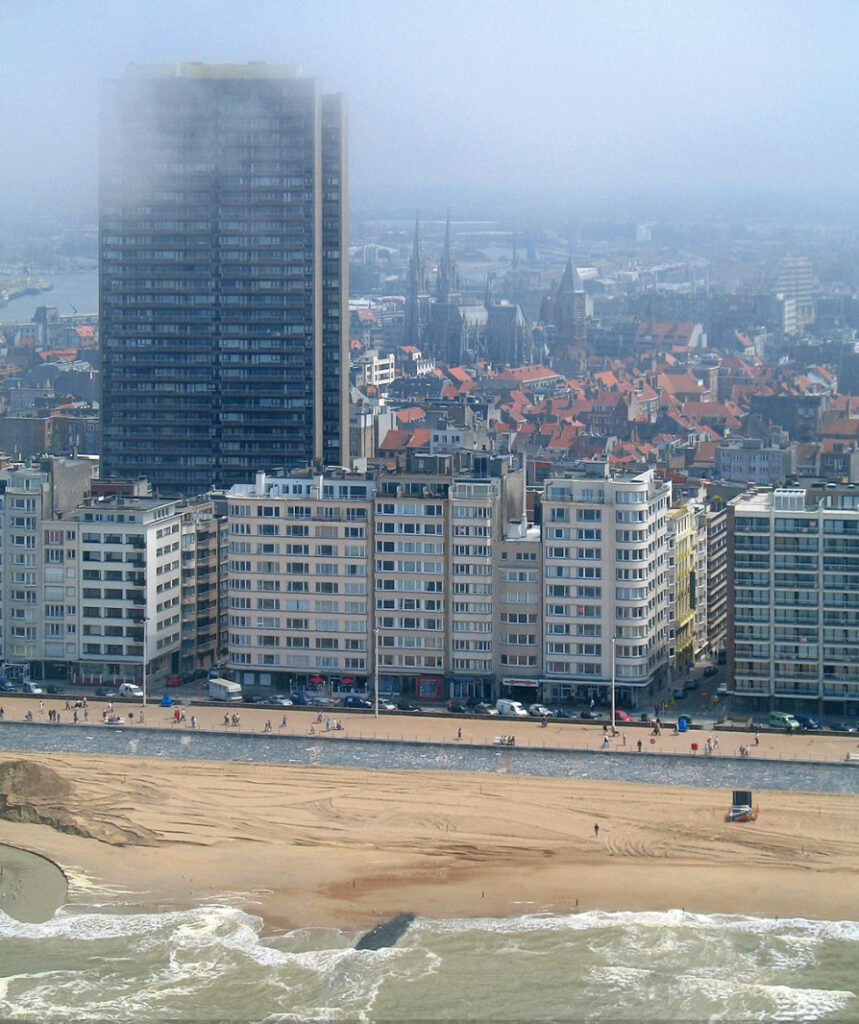
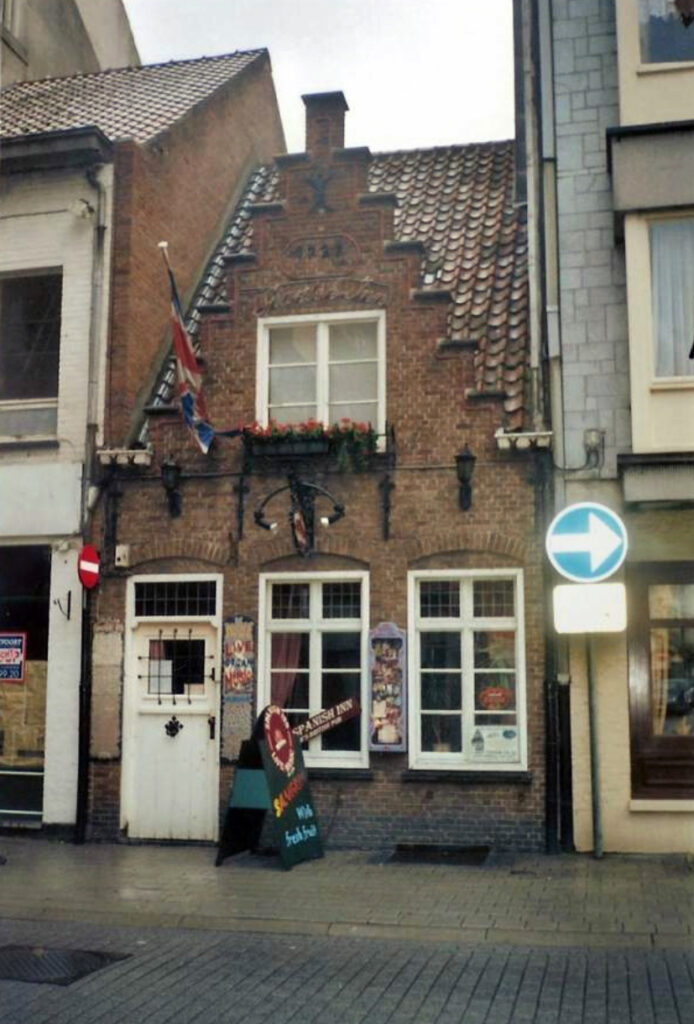
Ostend’s maritime history and heritage are deeply intertwined with its development as a fishing village, a strategic port, and a center for maritime trade and culture over the centuries. Its connection to the sea remains a defining feature of the city today.
1. Early Maritime Beginnings
• Ostend’s origins in the 9th century were as a small fishing settlement on an island, taking advantage of its proximity to the North Sea. Fishing, particularly for grey shrimp and cod, was the backbone of the local economy.
• Over time, Ostend grew into a small trading port, linking Belgium with England, France, and the Netherlands.
2. The Ostend Company (1722–1731)
• In the 18th century, Ostend rose to prominence as a trading center with the creation of the Ostend Company. It was a Belgian counterpart to other colonial trading companies like the British East India Company.
• The company traded with China and India, bringing back luxury goods such as tea, porcelain, and spices. Though it was short-lived due to political pressure from rival powers, it marked an important period of Ostend’s maritime history.
3. Fishing Heritage
• Ostend’s fishing industry has been a cornerstone of its economy for centuries. Fishermen ventured as far as Iceland for their catch. The trade supported local livelihoods and shaped Ostend’s culture.
• The Amandine Museum pays tribute to this history. Housed aboard the last Icelandic fishing trawler, visitors can explore life on the North Sea and learn about the challenges of deep-sea fishing.
4. Ostend as a Strategic Naval Base
• World War I and II: Ostend’s port and location made it strategically important during both world wars.
• In World War I, German forces turned Ostend into a naval base, launching attacks on Allied forces. The port was bombarded heavily.
• During World War II, Ostend was fortified as part of the Atlantikwall, the German coastal defense system stretching from Norway to Spain.
• Today, the Atlantikwall Open-Air Museum at Raversyde preserves bunkers, tunnels, and gun emplacements, providing a chilling look at wartime defenses.
5. The Port of Ostend
• Ostend’s port remains a vital economic hub, connecting Belgium to the rest of Europe. It supports:
• Fishing: Ostend is famous for its North Sea seafood, particularly shrimp and sole.
• Passenger Ferries: Historically, Ostend connected Belgium to England with ferry services. Although this has declined, maritime transport continues.
• Cargo and Freight: The port handles goods, contributing to the city’s economy.
6. Maritime Attractions
Ostend’s maritime history is celebrated through several attractions:
• The Mercator: A three-masted barquentine built in 1932, the Mercator was used as a training ship for Belgian naval cadets and is now a floating museum. Visitors can explore the ship and learn about its voyages.
• Amandine Fishing Vessel: An interactive museum aboard the last trawler to fish in Icelandic waters.
• Ostend Fish Market: A lively harbor-side market showcasing fresh seafood, where visitors can experience the local fishing culture firsthand.
7. Modern Maritime Culture
• Ostend’s maritime heritage lives on in its fishing traditions, seafood cuisine, and its active port. The annual shrimp festival celebrates the local delicacy, and the city remains a gateway for trade and tourism.
• Coastal activities, such as sailing, windsurfing, and harbor tours, allow visitors to experience Ostend’s connection to the sea firsthand.

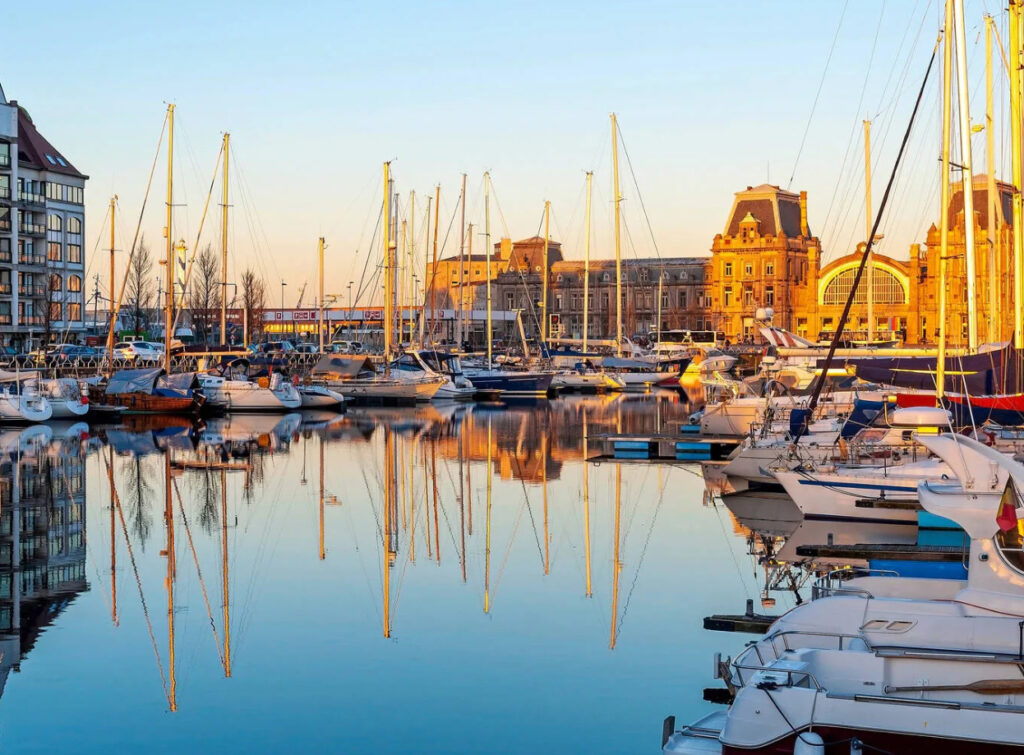
James Ensor (1860–1949) was a Belgian painter and printmaker, celebrated as a pioneer of modern art. Born and raised in Ostend, Ensor spent most of his life in the coastal city, which greatly influenced his work.
Artistic Style
• Ensor is best known for his use of bold colors, imaginative compositions, and depictions of grotesque masks, skeletons, and satirical scenes.
• His works often reflect themes of death, absurdity, and social critique, blending Symbolism and early Expressionism.
Famous Works
• His masterpiece, The Entry of Christ into Brussels (1888), is a striking, chaotic painting that critiques society and politics.
• His unique style influenced later avant-garde movements, including Surrealism.
James Ensor House
• Visitors to Ostend can explore the James Ensor House, his former residence, now a museum showcasing his life, art, and personal items.
Ensor’s innovative approach to art made him one of Belgium’s most iconic and forward-thinking artists.
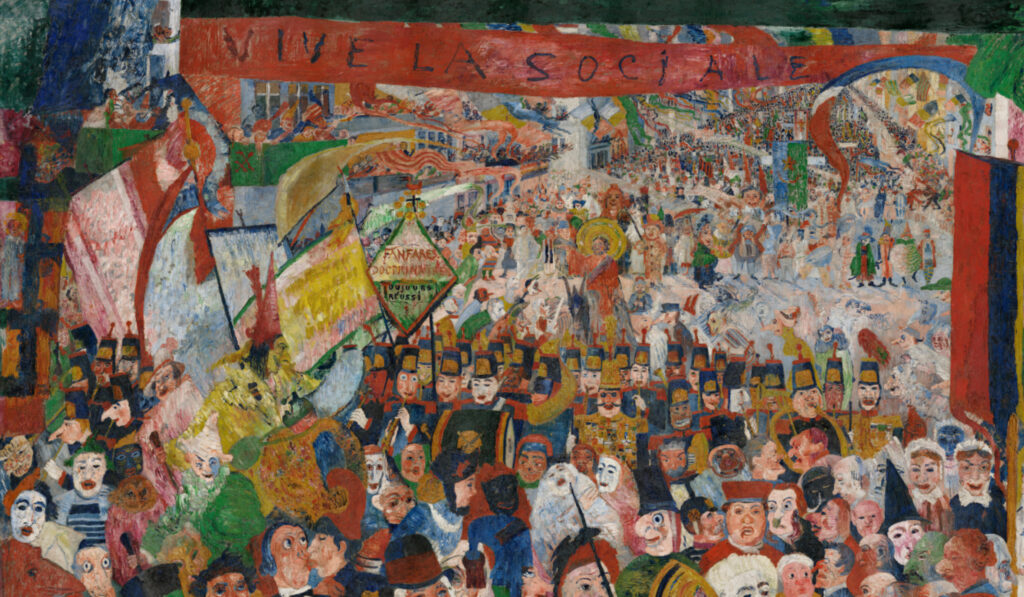
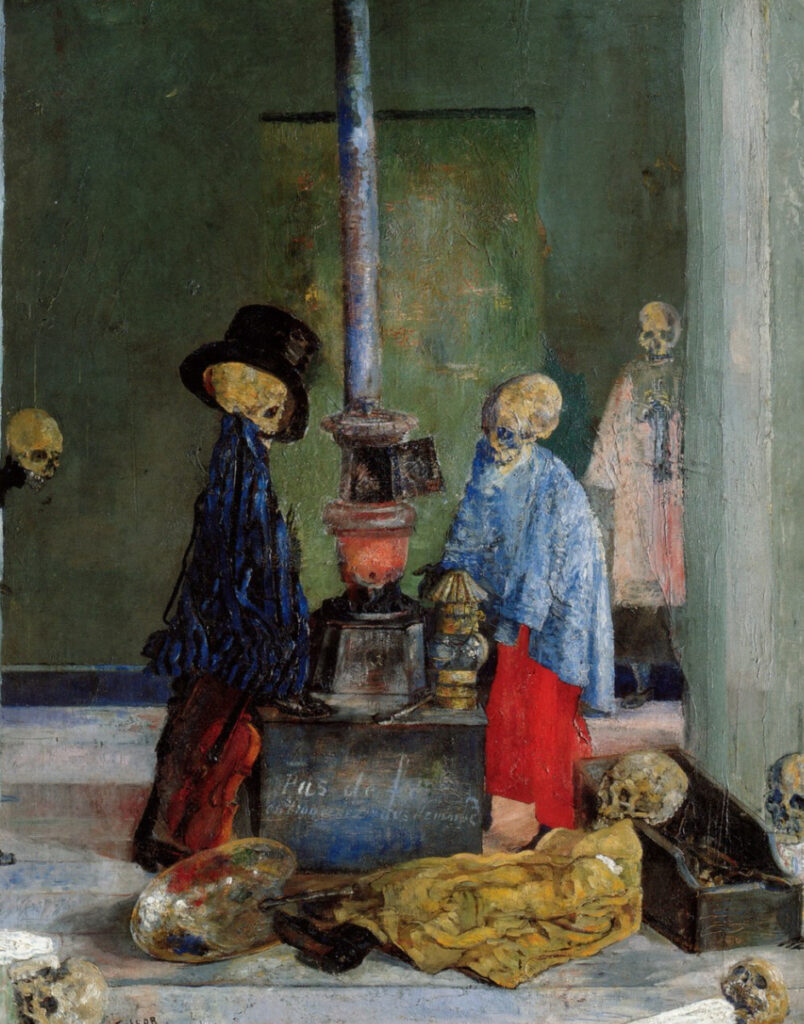
Here’s a one-day itinerary for exploring Ostend, combining major attractions with local food specialties for an enjoyable seaside experience.
Morning
1. Breakfast at Lizette (8:30 AM – 9:30 AM)
• Start your day at Lizette, a cozy café in the city center, known for its fresh pastries and excellent coffee. Try a pistolet (Belgian bread roll) with local cheese or jam.
2. Visit Sint-Petrus-en-Pauluskerk (9:45 AM – 10:15 AM)
• Explore this stunning neo-Gothic church, Ostend’s architectural centerpiece, famous for its intricate stained glass windows and striking twin spires.
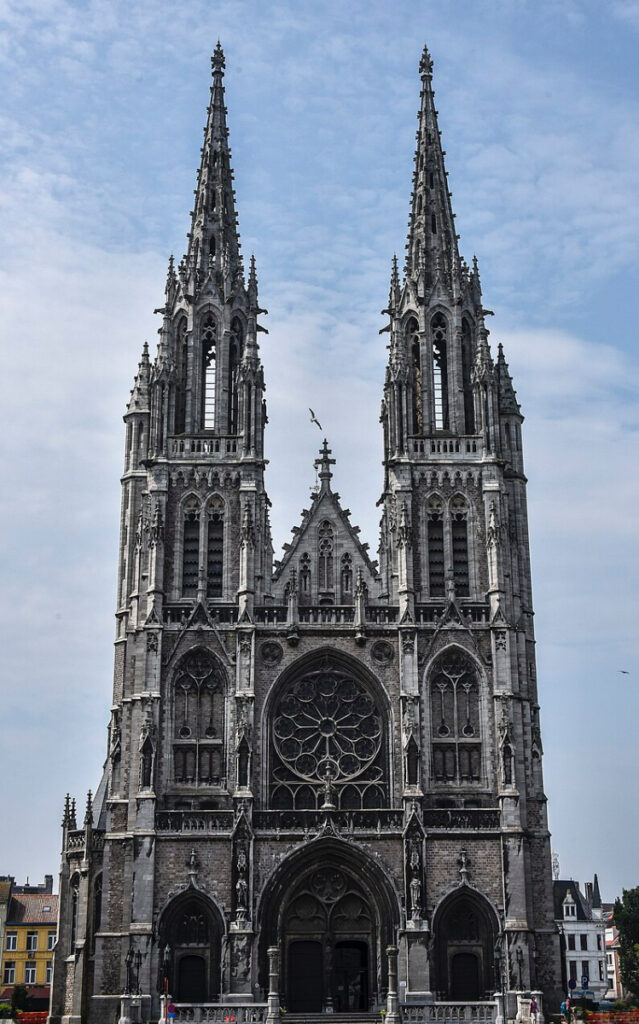
3. The Mercator Ship (10:30 AM – 11:30 AM)
• Head to the harbor to visit the Mercator, a beautifully preserved 1930s training ship turned museum. Walk through its decks and learn about Belgium’s maritime history.
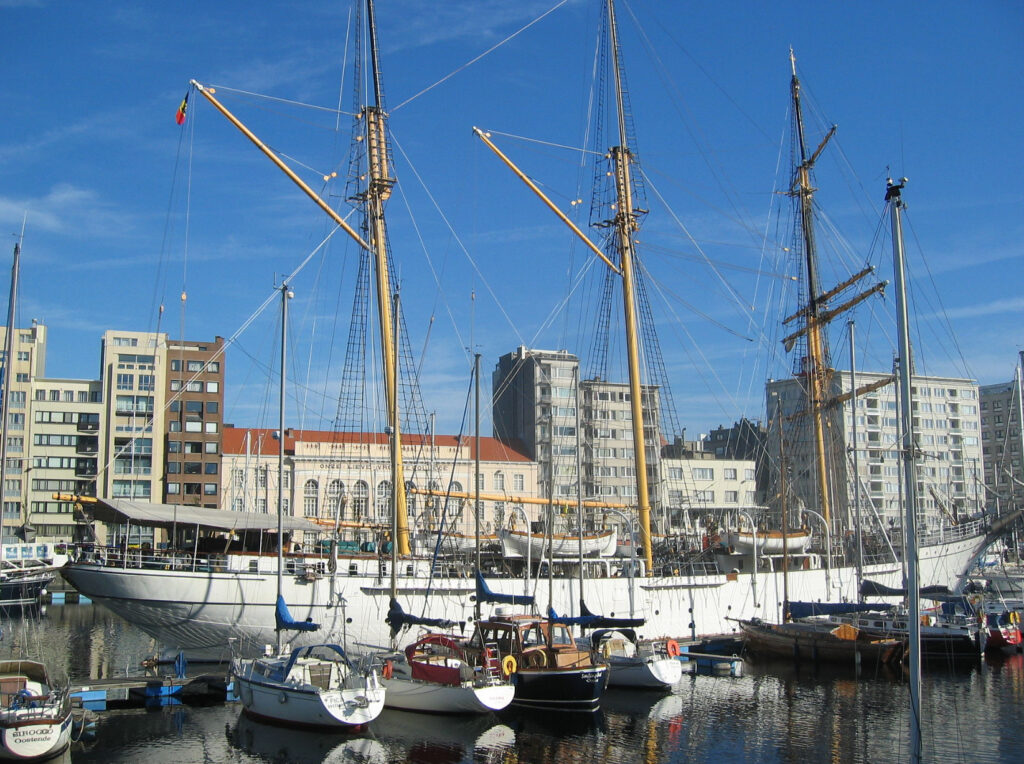
4. Walk Along the Promenade and Beach (11:45 AM – 12:30 PM)
• Stroll along Ostend’s famous seaside promenade. Enjoy the sea breeze, take photos, and admire the grand historic buildings like the Royal Galleries.
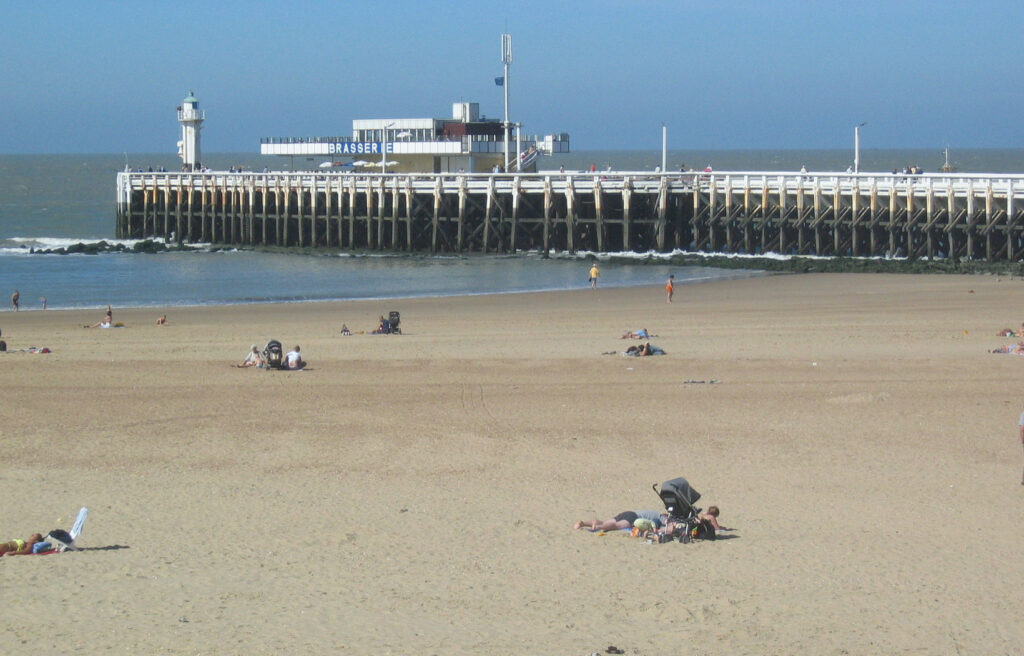
Lunch: Local Seafood Specialties (12:45 PM – 2:00 PM)
• Head to De Visscher or Galerie Beausite near the beach for a seafood feast.
• Must-try dishes:
• Shrimp croquettes (garnaalkroketten) – creamy croquettes filled with North Sea grey shrimp.
• Sole meunière – fresh sole fish pan-fried in butter.
• Pair it with a local Belgian beer for an authentic experience.
Afternoon
5. Visit the James Ensor House (2:15 PM – 3:00 PM)
• Discover the former home of James Ensor, one of Belgium’s most celebrated artists. The museum offers insight into his life and unique artworks featuring masks, skeletons, and surreal themes.
6. Fort Napoleon (3:15 PM – 4:15 PM)
• Take a short ferry or walk to visit Fort Napoleon, a well-preserved Napoleonic fortress. Explore its exhibitions on Ostend’s military history and enjoy panoramic views of the coastline.
7. Coffee and Dessert Break at ’t Zeetje (4:30 PM – 5:00 PM)
• Stop at ’t Zeetje, a charming café along the promenade. Treat yourself to a gaufre de Liège (Belgian waffle) topped with whipped cream or strawberries.
Evening
8. Explore Atlantikwall Raversyde (5:15 PM – 6:45 PM)
• Visit the Atlantikwall Open-Air Museum to walk through WWII bunkers, tunnels, and fortifications. It’s an immersive and thought-provoking experience.
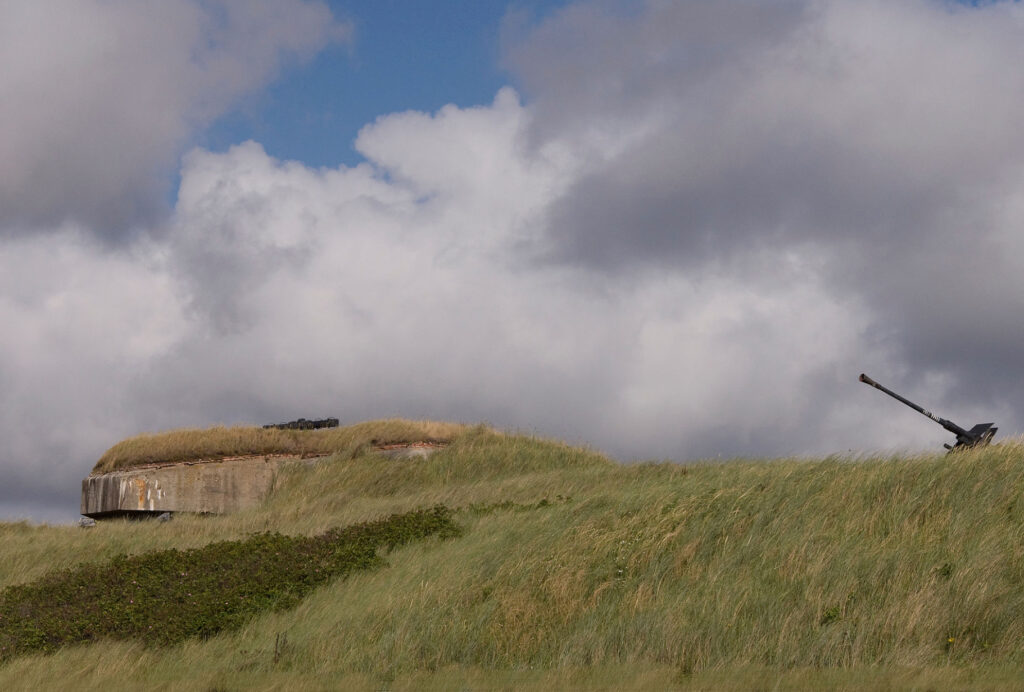
9. Dinner at Bistro Mathilda (7:30 PM – 9:00 PM)
• End your day with a refined meal at Bistro Mathilda, known for its elegant take on Belgian cuisine.
• Highlights include:
• Sea bass with seasonal vegetables.
• Local shrimp dishes.
• Pair your meal with a glass of Belgian white wine or a regional beer.
Optional: Evening Stroll by the Sea
• After dinner, take a final stroll along the beach to enjoy the illuminated Kursaal Oostende and the sounds of the North Sea.
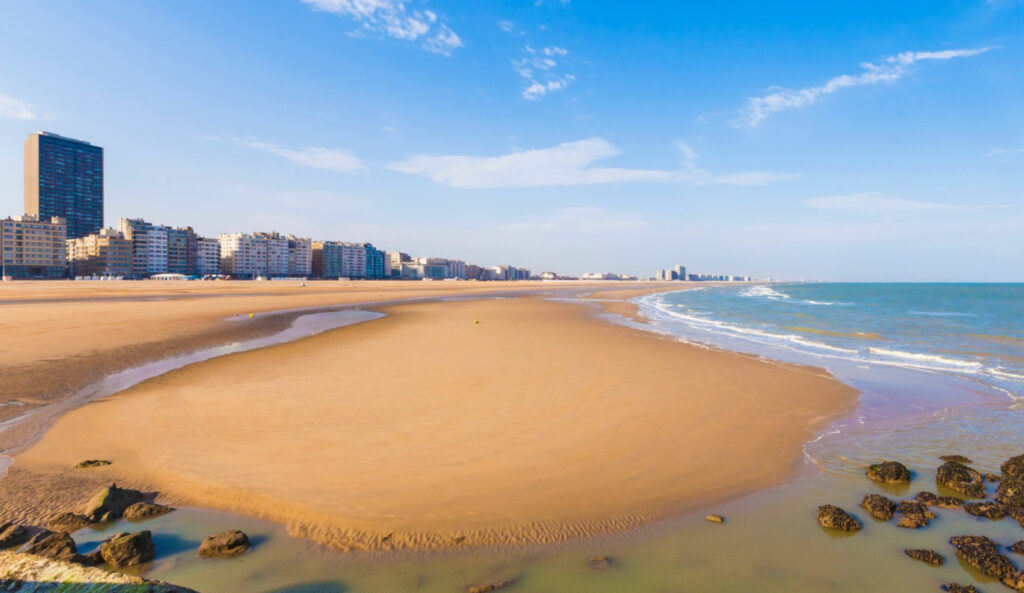
This itinerary ensures you experience Ostend’s major attractions, its unique maritime and artistic history, and indulge in delicious local seafood specialties.
